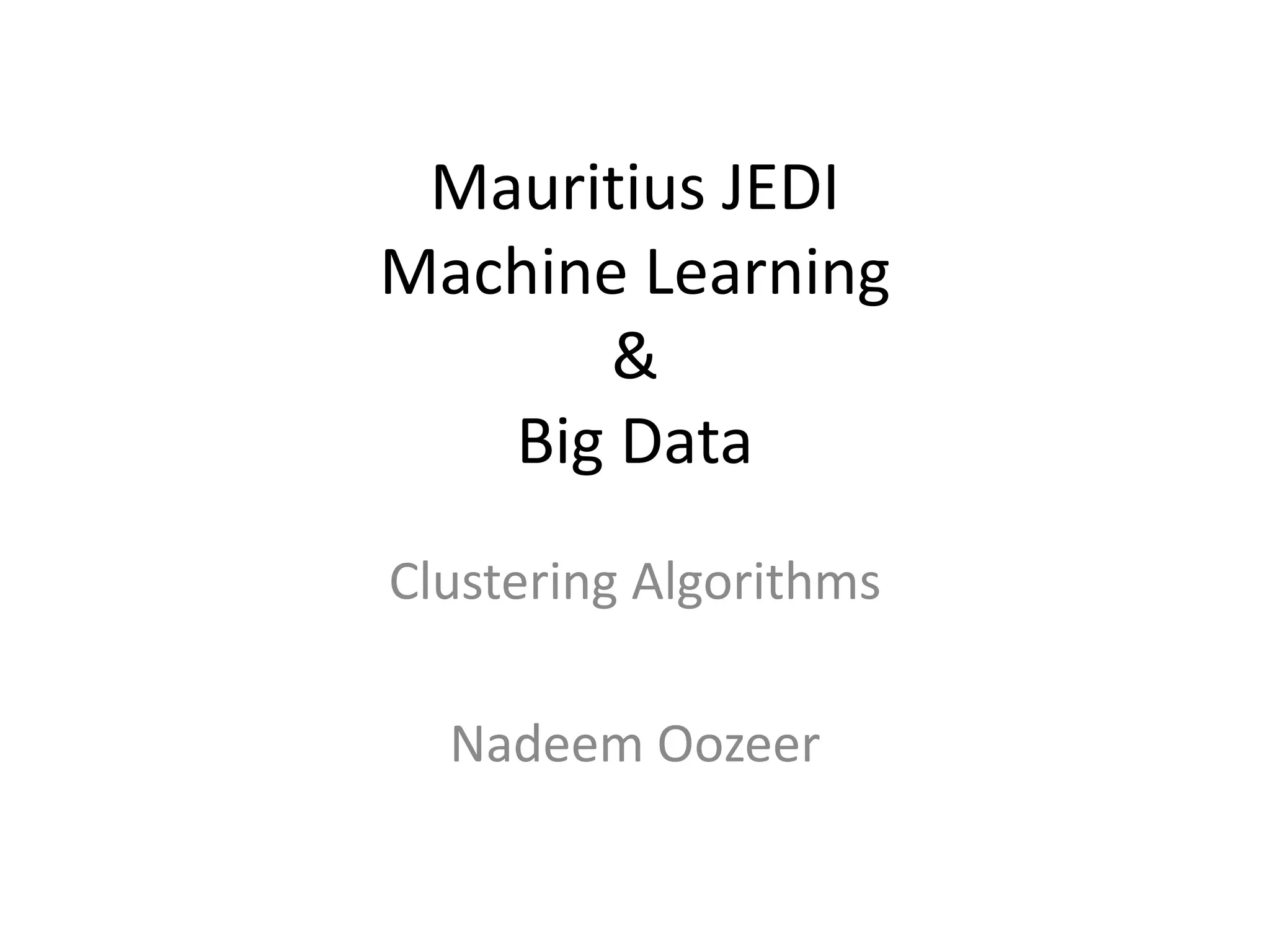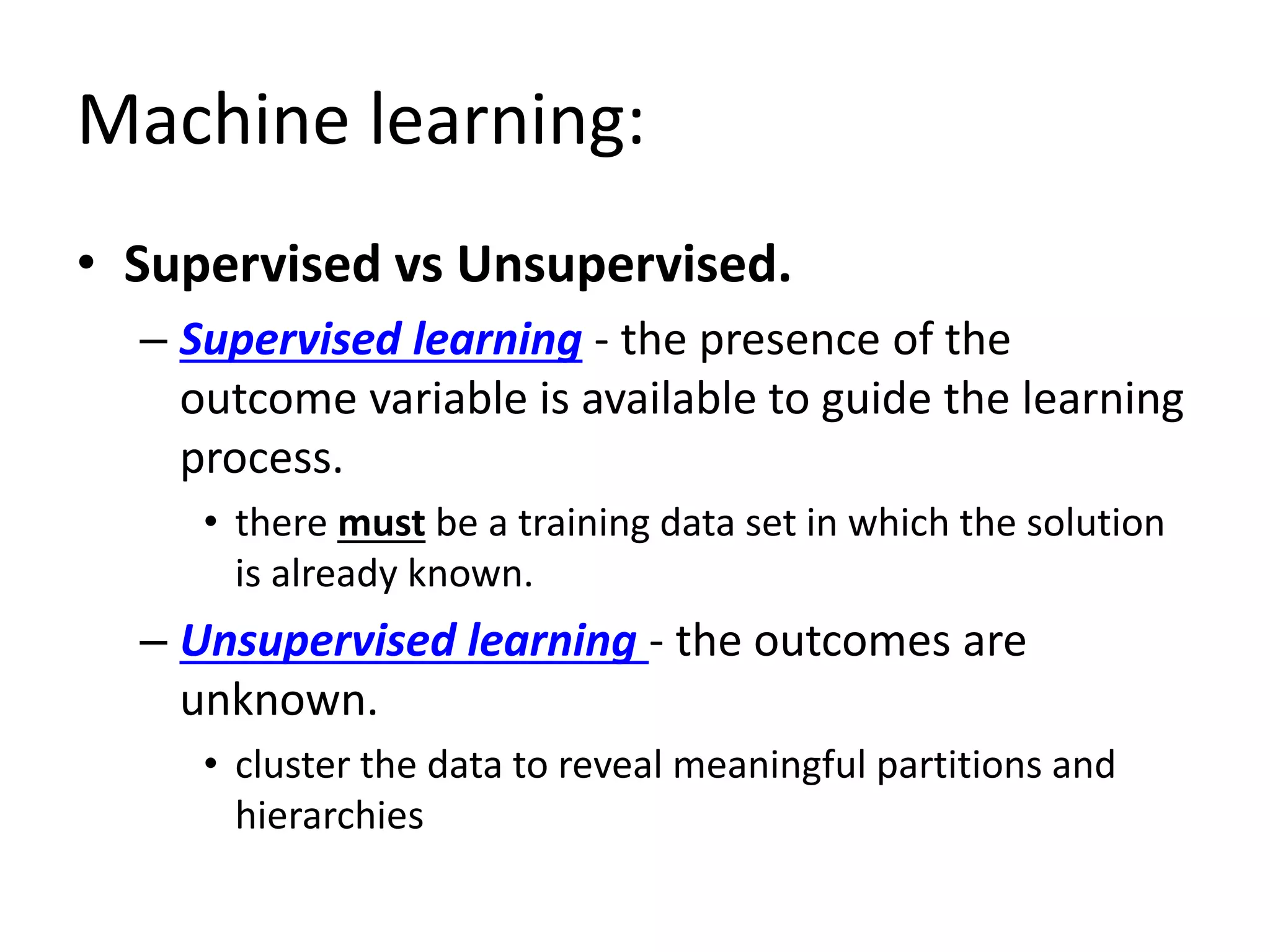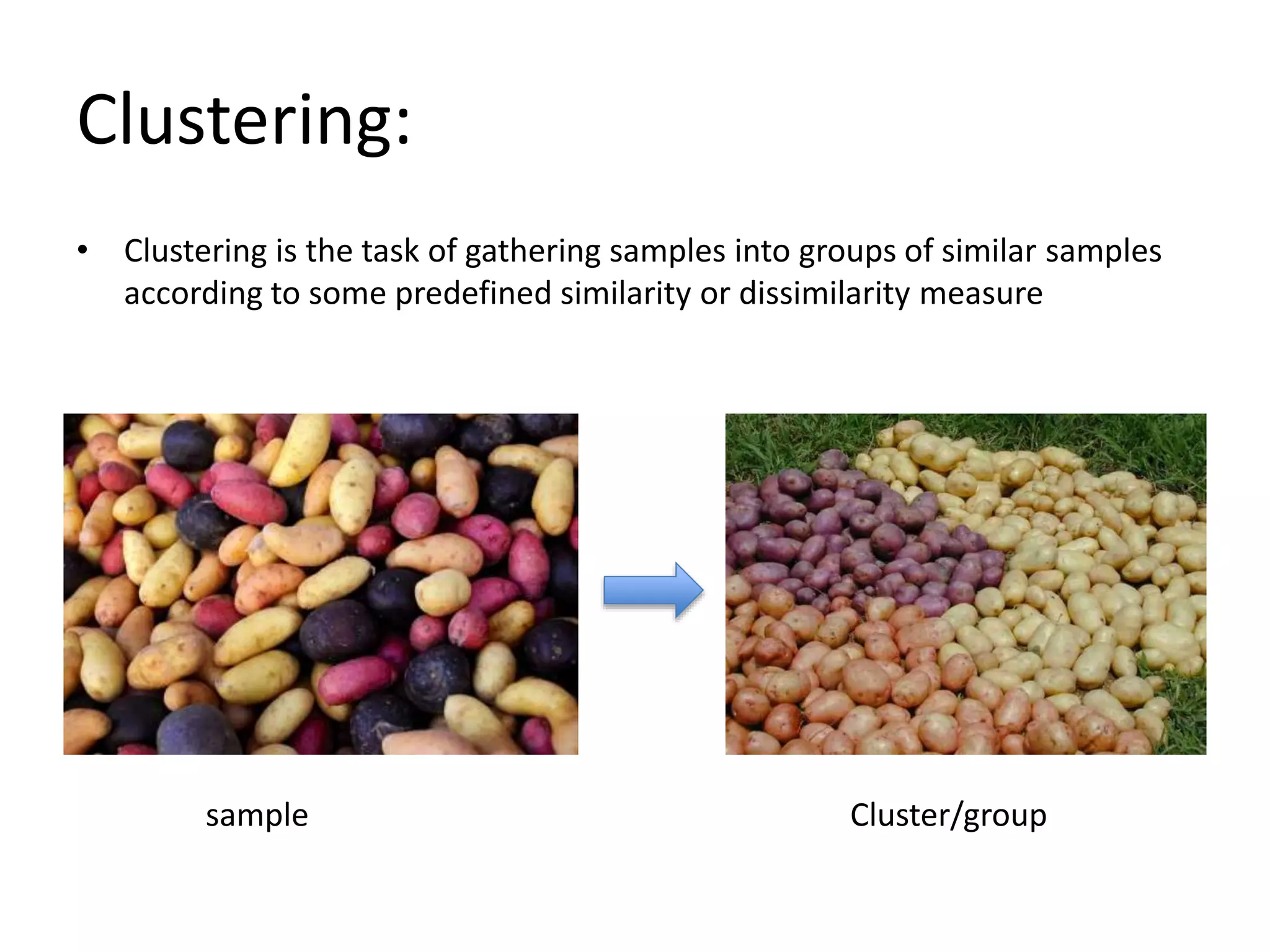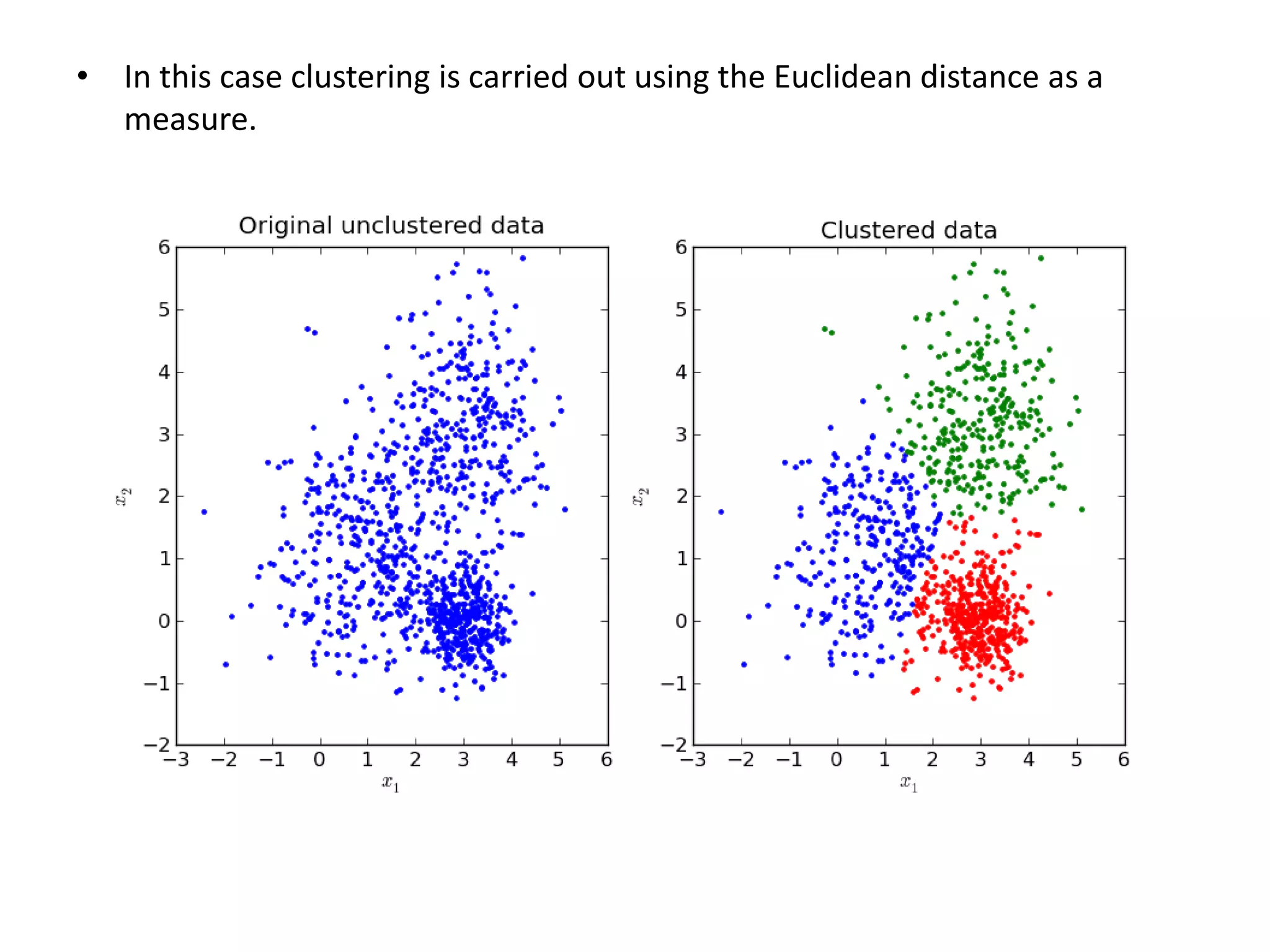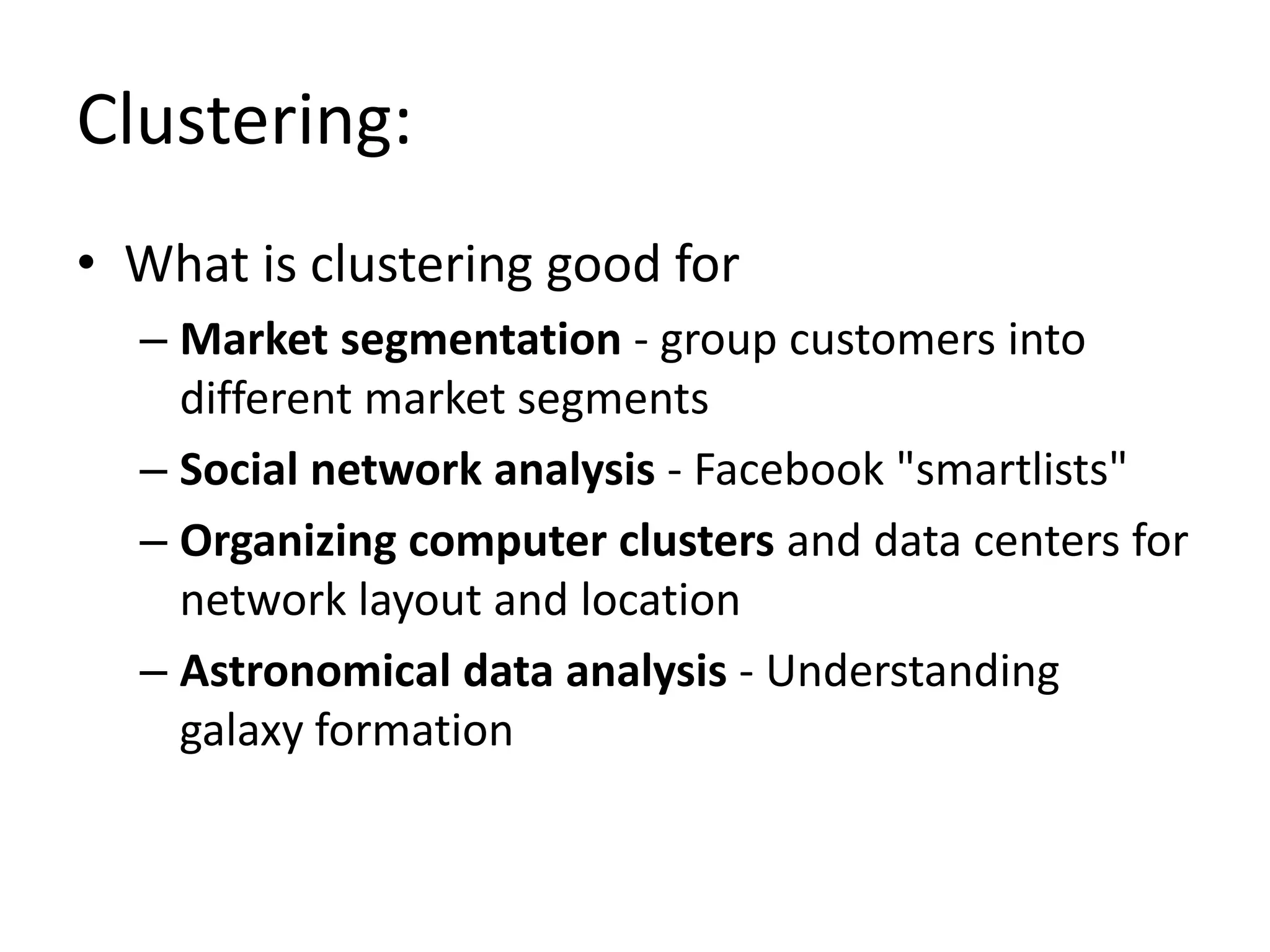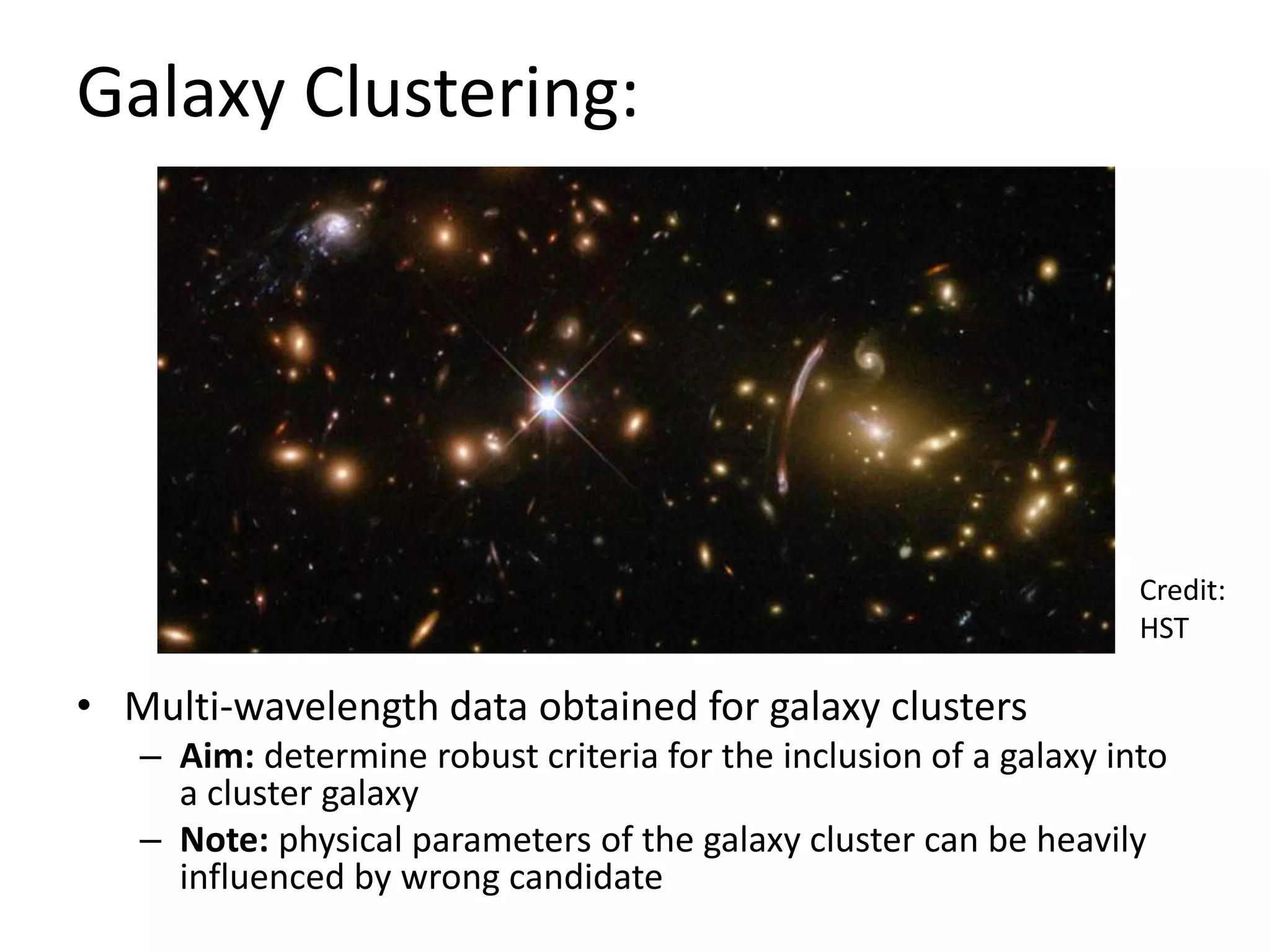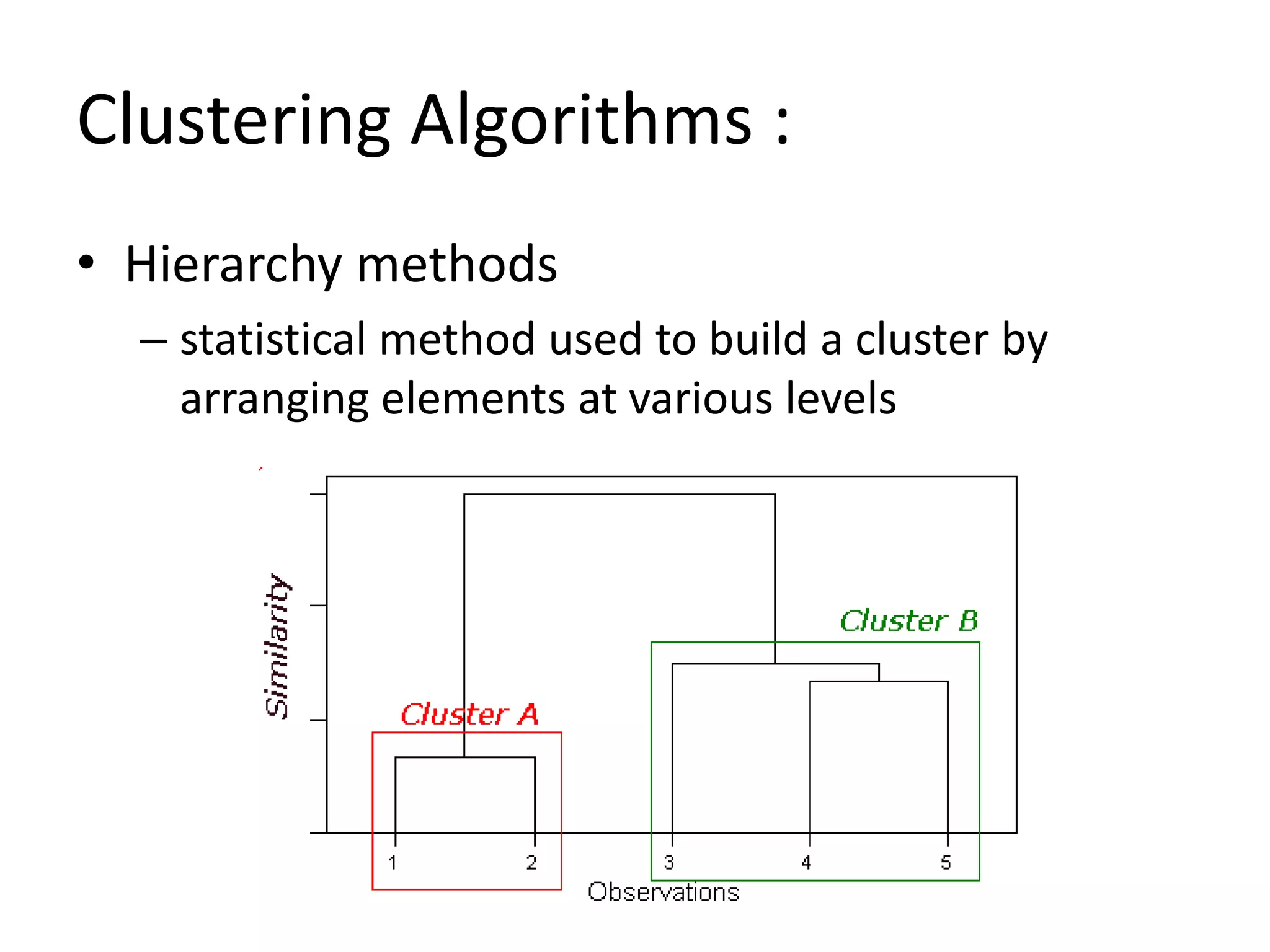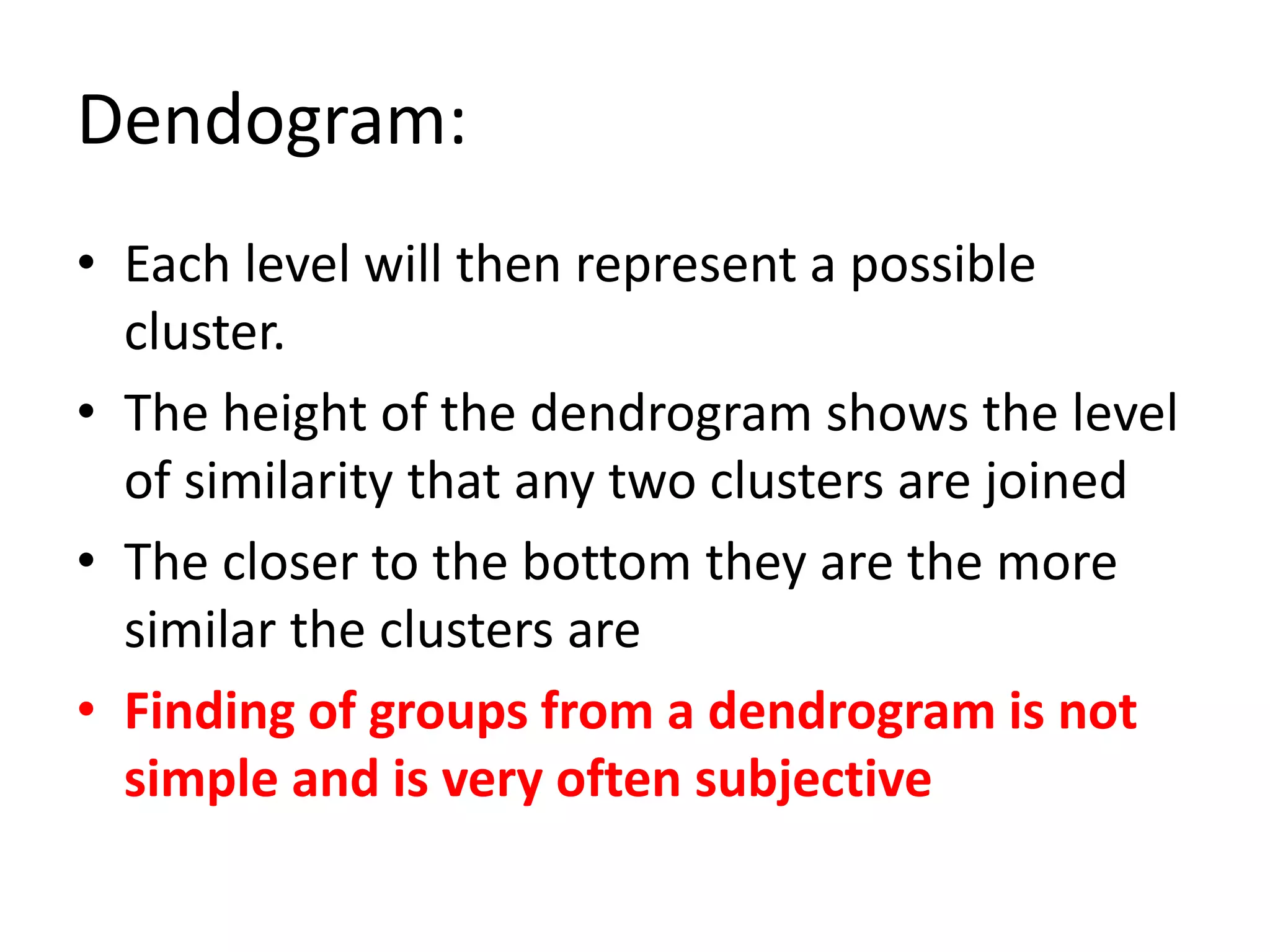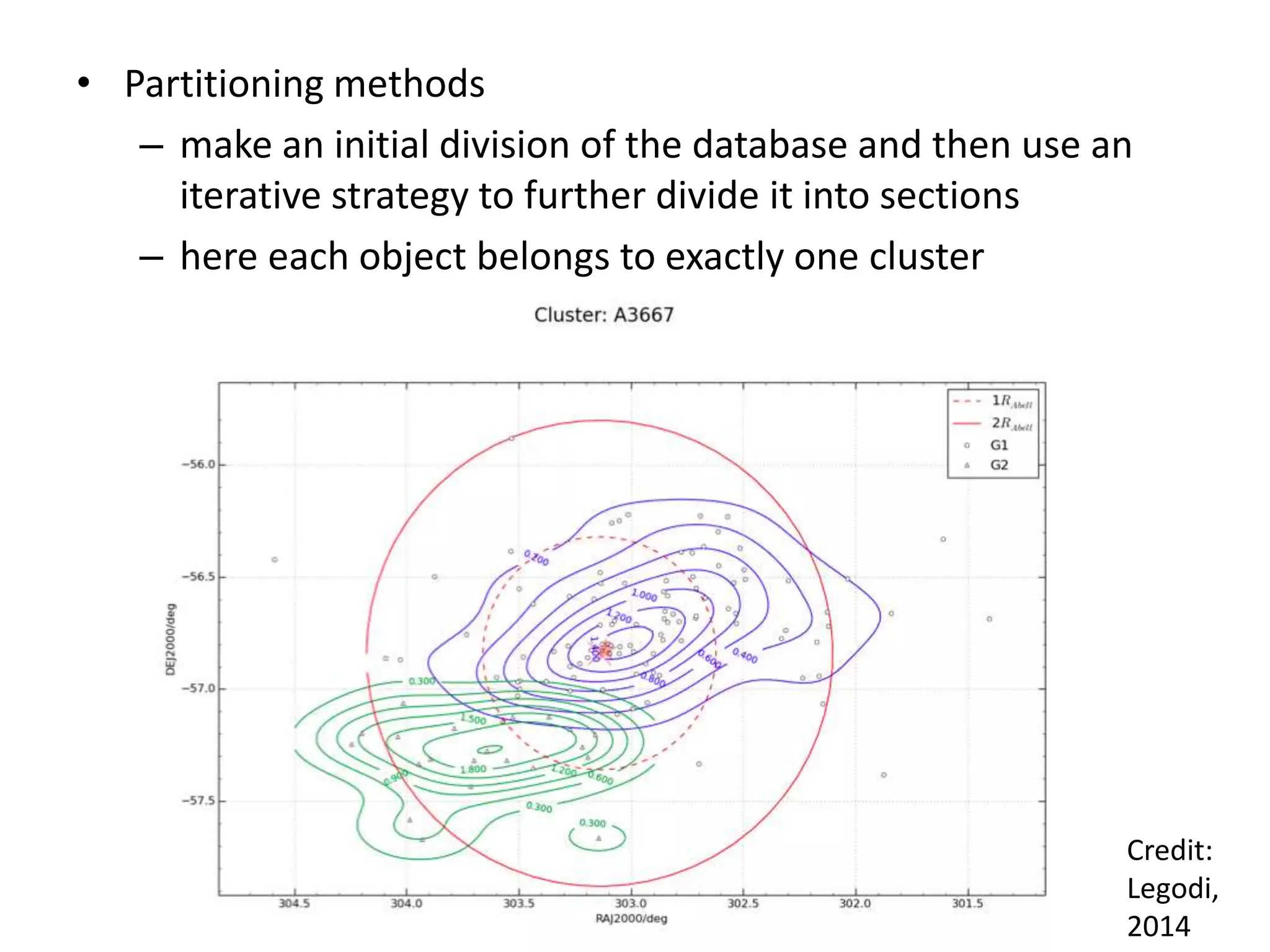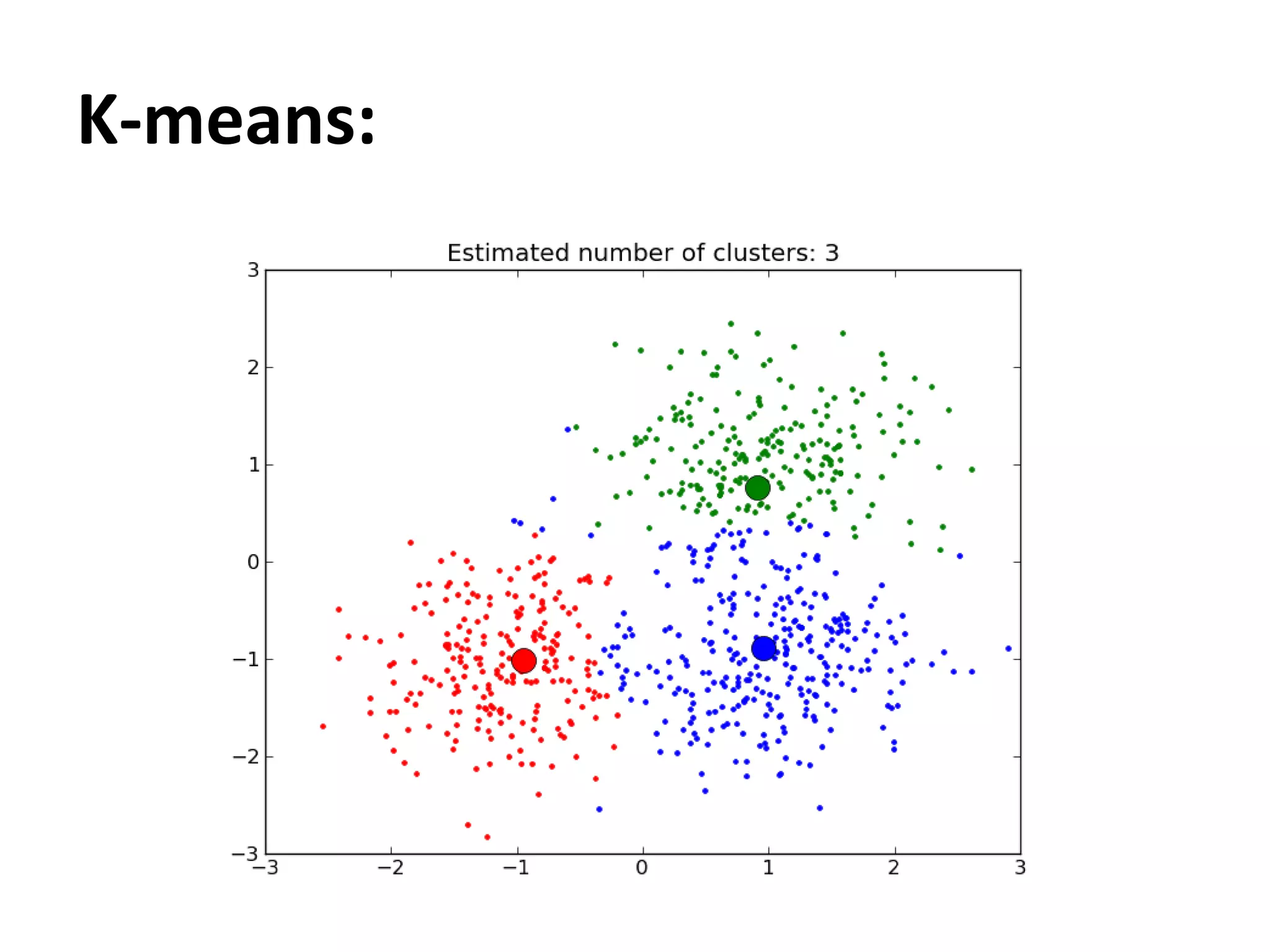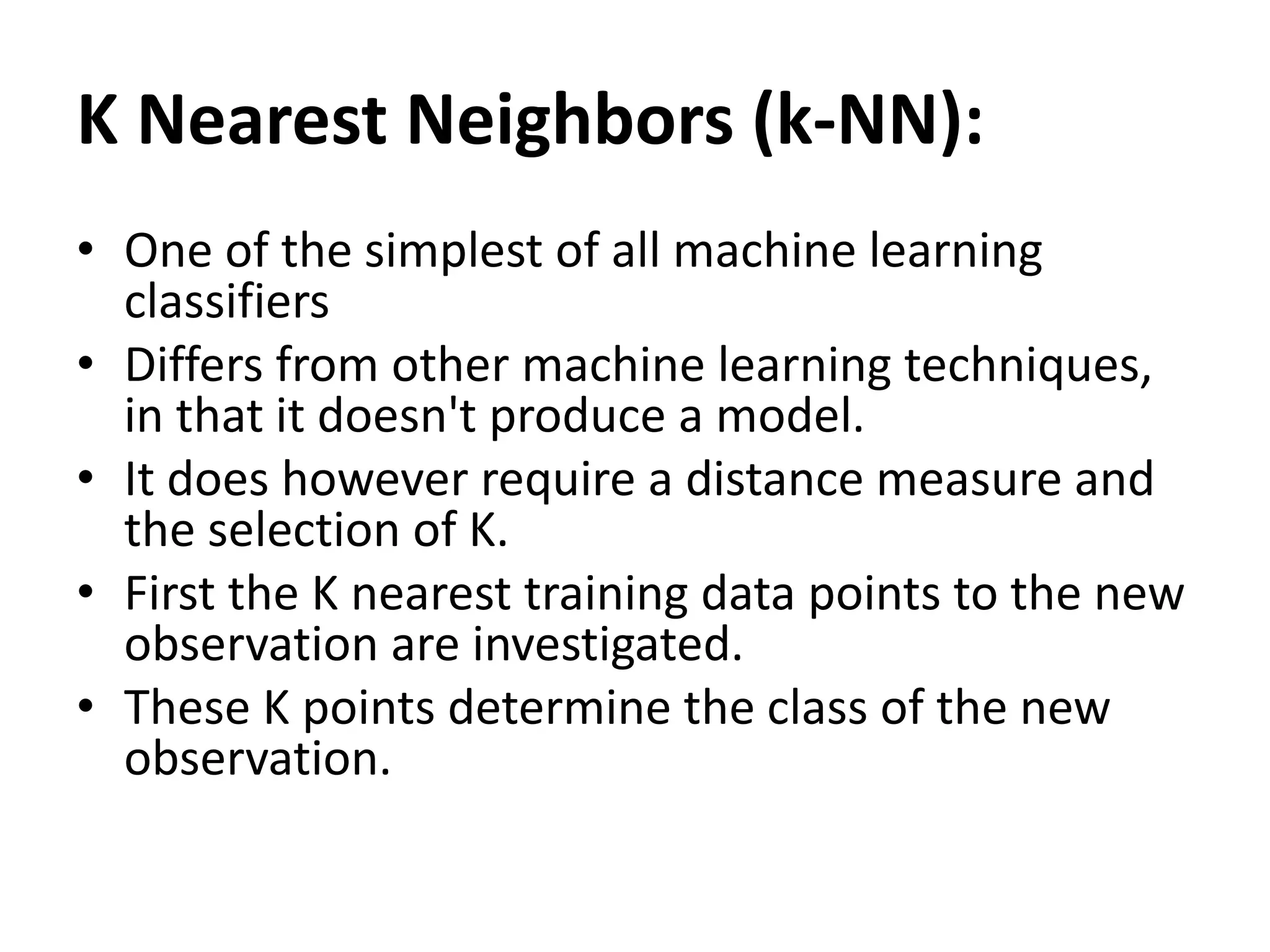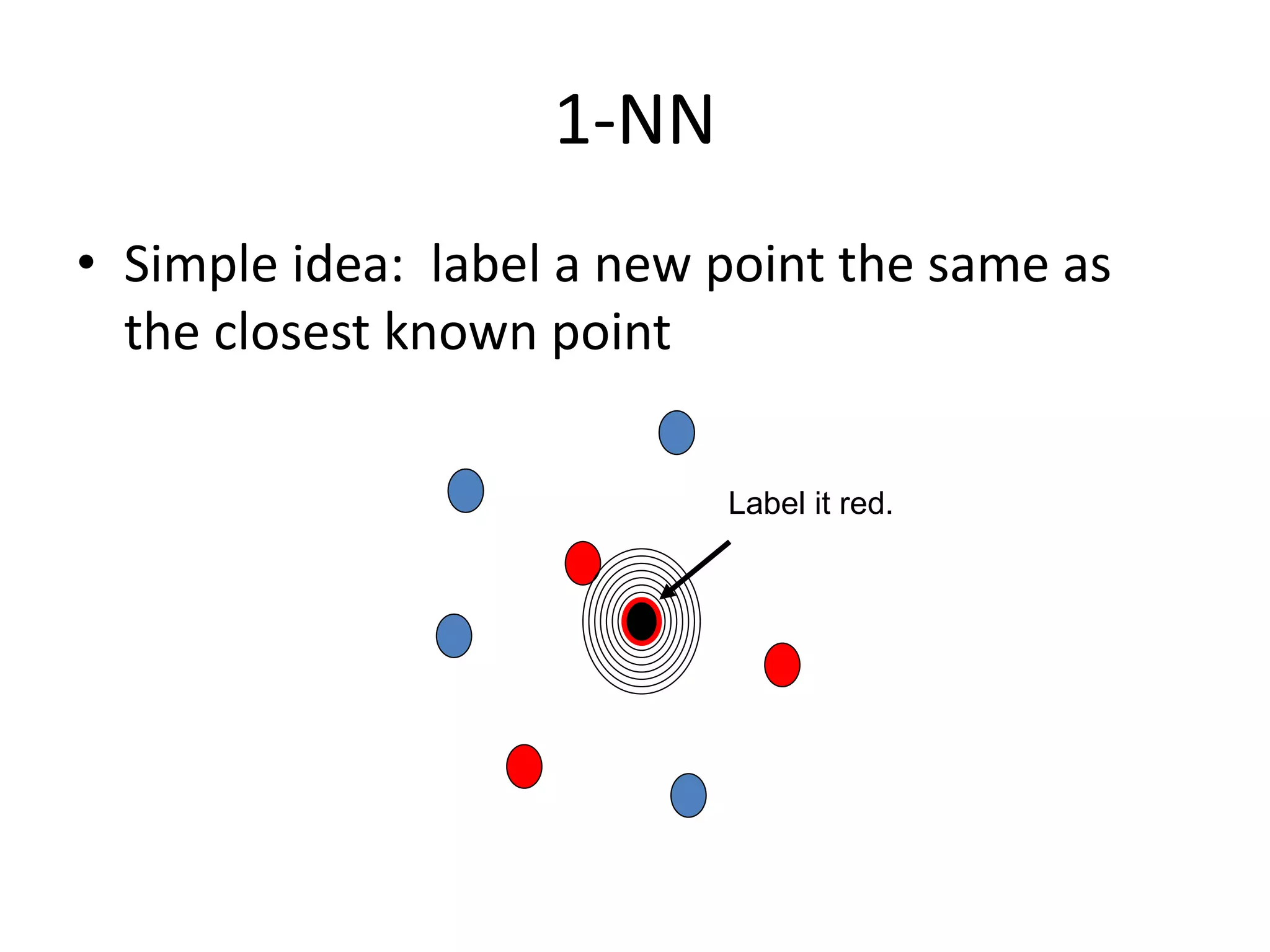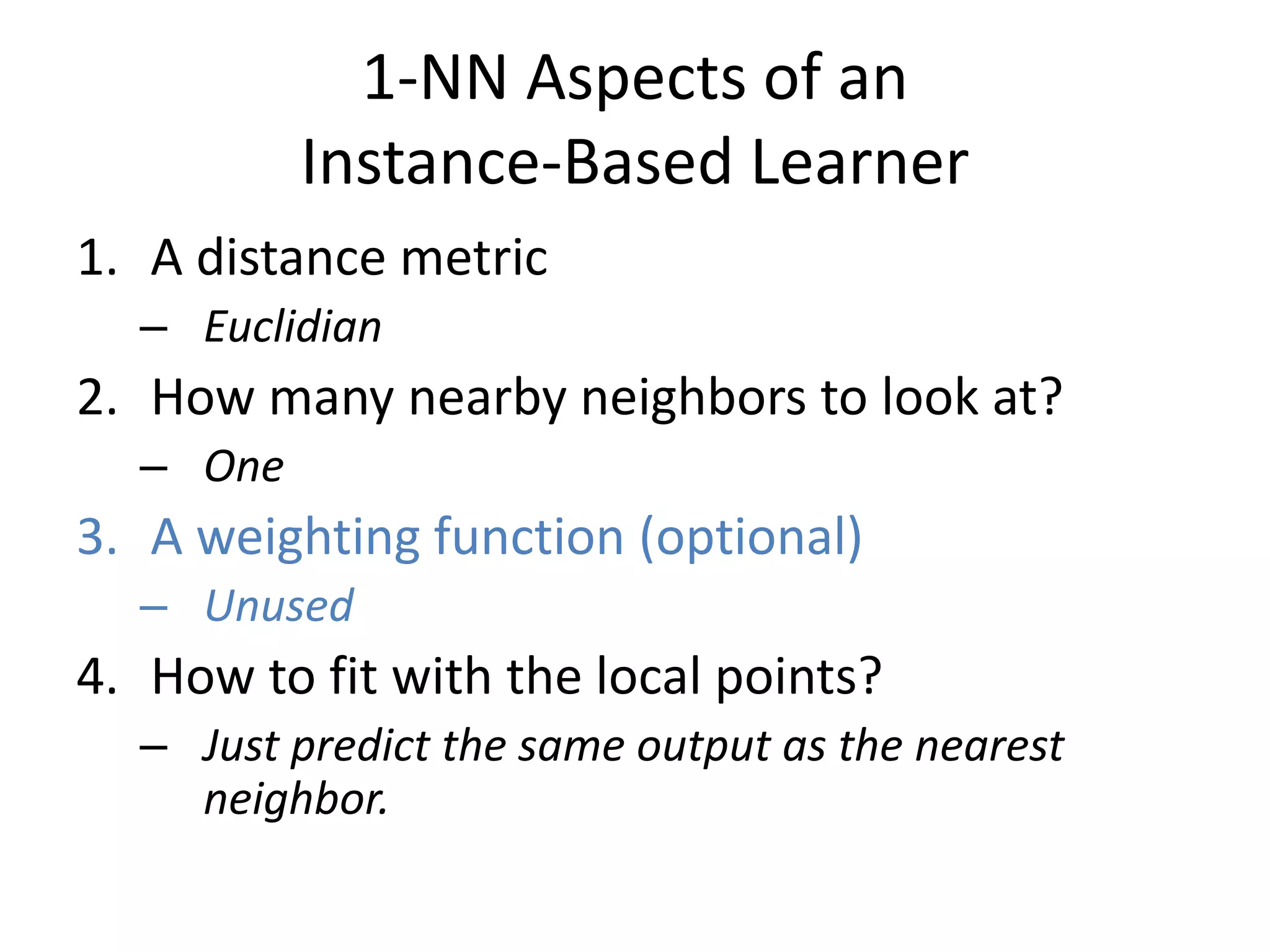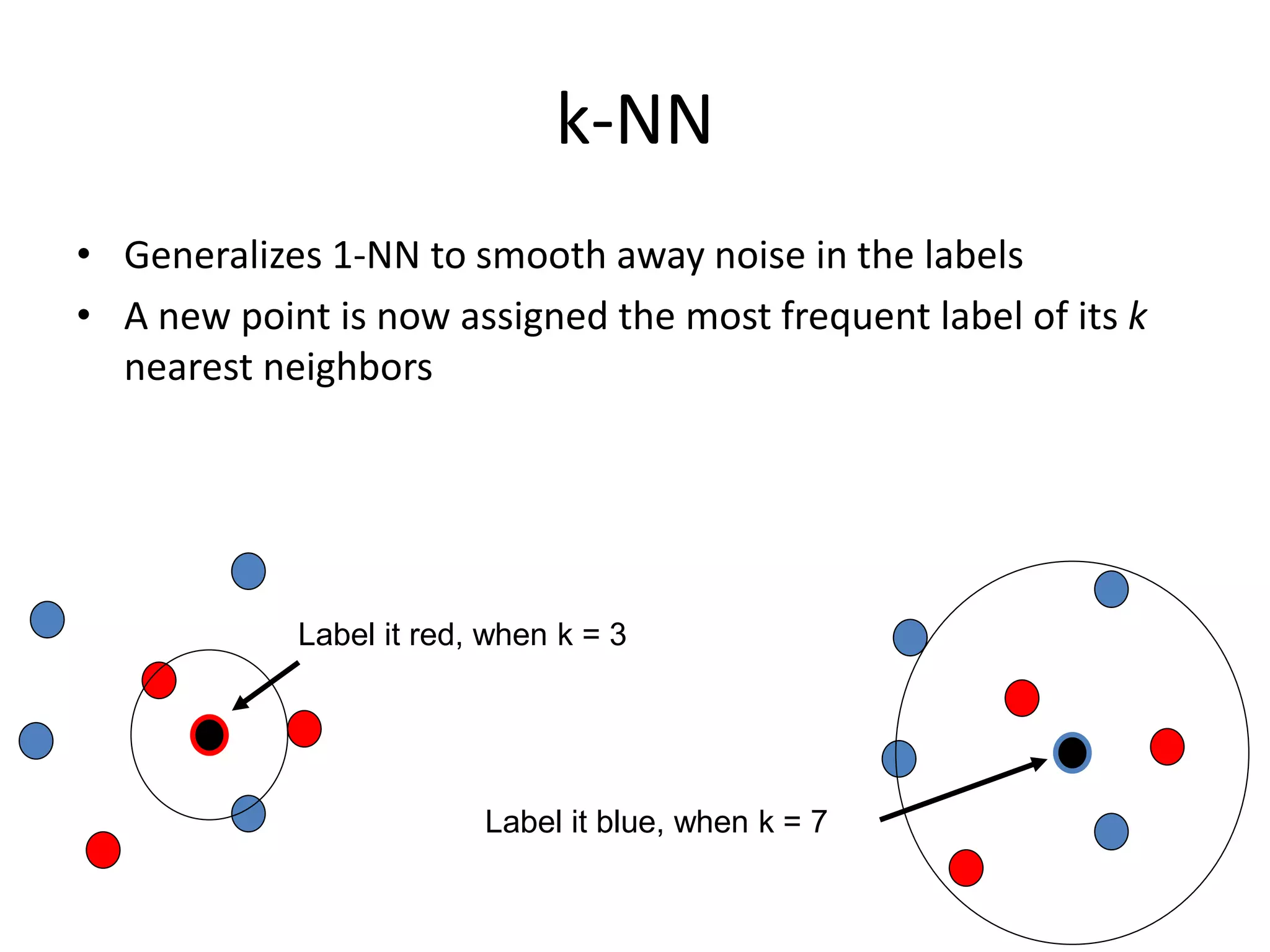This document discusses machine learning concepts including supervised vs. unsupervised learning, clustering algorithms, and specific clustering methods like k-means and k-nearest neighbors. It provides examples of how clustering can be used for applications such as market segmentation and astronomical data analysis. Key clustering algorithms covered are hierarchy methods, partitioning methods, k-means which groups data by assigning objects to the closest cluster center, and k-nearest neighbors which classifies new data based on its closest training examples.
